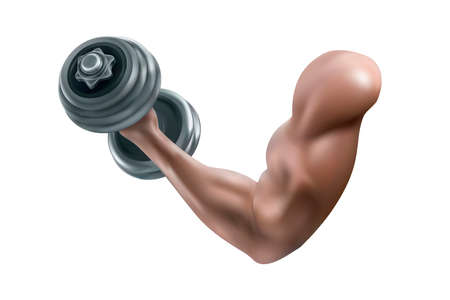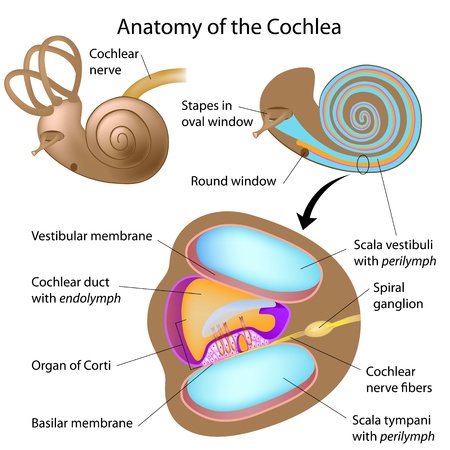1. Understanding Back and Spine Injuries
Overview of Common Back and Spine Conditions in the U.S.
Back and spine injuries are among the most common health concerns for Americans. Millions of people experience back pain each year, making it a leading reason for missed work and doctor visits. These conditions can affect anyone—young or old, active or sedentary. Here’s a look at some of the most common back and spine problems in the United States:
| Condition | Description | Who’s Most at Risk? |
|---|---|---|
| Herniated Disc | A disc between the vertebrae slips out of place, pressing on nerves. | Adults aged 30-50, heavy lifters, those with poor posture |
| Degenerative Disc Disease | The discs lose flexibility and cushioning over time. | Older adults, people with family history, smokers |
| Sciatica | Pain radiating from the lower back down the leg due to nerve compression. | Pregnant women, overweight individuals, those with sedentary jobs |
| Scoliosis | An abnormal curve in the spine, often noticed in adolescence. | Teens (especially girls), people with family history |
| Sprains and Strains | Injuries to muscles or ligaments from overstretching or lifting improperly. | Athletes, manual laborers, weekend warriors |
Key Risk Factors for Back and Spine Problems
- Poor Posture: Sitting hunched over a computer or phone for long periods can strain your back.
- Lack of Exercise: Weak core muscles make it easier to injure your back during daily activities.
- Obesity: Carrying extra weight puts added pressure on your spine.
- Improper Lifting: Bending from the waist instead of the knees often leads to strains.
- Aging: As we get older, spinal structures naturally wear down.
- Smoking: Reduces blood flow to spinal tissues, slowing healing and increasing degeneration.
- Occupational Hazards: Jobs that require heavy lifting or repetitive movements increase risk.
- Lack of Ergonomics: Poorly designed workspaces can contribute to chronic pain.
The Impact on Everyday Life
A back or spine injury can have a big effect on everyday routines. Many people find it hard to sit comfortably at their desk, pick up their kids, do chores around the house, or even get a good night’s sleep. Chronic pain may lead to decreased activity levels and can impact emotional well-being, causing frustration or depression. In severe cases, these injuries might limit a person’s ability to work or participate in favorite hobbies. Early recognition and proper management are key steps in getting back to normal life as quickly as possible.
2. Initial Assessment and Setting Recovery Goals
Seeking Professional Medical Evaluation
When you first experience back or spine pain, its important to get evaluated by a qualified healthcare provider. In the United States, this often means visiting your primary care physician, an orthopedic specialist, or a physical therapist. These professionals are trained to assess your symptoms, review your medical history, and determine whether further tests are needed. Early evaluation helps rule out serious issues like fractures or infections and sets you on the right path for recovery.
The Role of Imaging in Back and Spine Rehabilitation
Imaging tests can be an essential part of diagnosing back and spine conditions. However, not everyone needs an X-ray or MRI right away. Doctors typically recommend imaging if:
- Your pain is severe or has lasted more than a few weeks
- You have numbness, weakness, or tingling in your legs
- There is a history of trauma (like a car accident)
- You have other risk factors such as cancer or osteoporosis
Heres a quick overview of common imaging options:
| Imaging Test | What It Shows | When Its Used |
|---|---|---|
| X-ray | Bones and alignment | Suspected fractures or arthritis |
| MRI | Soft tissues (discs, nerves) | Persistent pain, nerve symptoms |
| CT Scan | Detailed bone images | Complex injuries or surgical planning |
Creating Personalized Rehabilitation Plans
No two people are alike when it comes to back and spine recovery. After your assessment, your healthcare provider will help design a rehab plan tailored to your specific needs. This plan may include:
- Physical therapy exercises to restore movement and strength
- Pain management strategies like heat/ice or medications
- Lifestyle adjustments such as ergonomic changes at work or home
- Education about posture and body mechanics to prevent future injury
Goal Setting for Your Recovery Journey
Setting clear goals keeps you motivated and tracks your progress. Common goals include:
- Reducing pain levels to resume daily activities comfortably
- Improving flexibility and range of motion
- Returning safely to work, sports, or hobbies
- Avoiding re-injury through proper self-care techniques
Your rehab team will work with you to set realistic milestones that fit your lifestyle and recovery timeline. Regular follow-ups help adjust your plan as you improve.

3. Core Strategies for Spine Rehabilitation
Evidence-Based Physical Therapy Techniques
Physical therapy is the cornerstone of spine rehabilitation in the United States. Licensed physical therapists use evidence-based techniques tailored to each persons specific needs and conditions. These methods are designed to restore mobility, reduce pain, and prevent future injuries. Common interventions include:
- Manual Therapy: Hands-on techniques like joint mobilization and soft tissue massage to improve movement and decrease discomfort.
- Therapeutic Exercise: Customized routines that focus on strengthening core muscles, improving flexibility, and correcting posture.
- Education: Teaching patients about proper body mechanics, ergonomics, and lifestyle changes for long-term spine health.
Safe Exercise Routines for Americans
Staying active is crucial for spine recovery, but it’s important to choose exercises that are safe and effective. Here’s a table outlining some popular exercise options commonly recommended in American rehab settings:
| Exercise Type | Description | How It Helps |
|---|---|---|
| Pilates | Low-impact exercises focusing on core strength and alignment | Improves core stability, posture, and reduces back strain |
| Walking | Moderate aerobic activity adaptable for most fitness levels | Boosts circulation, reduces stiffness, and supports weight management |
| Aquatic Therapy | Exercise in a warm pool with low impact on joints and spine | Decreases pain, increases range of motion, and enhances mobility |
| Yoga (Modified) | Gentle stretching and strengthening poses adapted for back care | Improves flexibility, relieves tension, and encourages relaxation |
Pain Management Practices Tailored for Americans
Pain management is an essential part of any back and spine rehabilitation plan. In the U.S., the approach often combines non-pharmacological strategies with patient education:
- Heat and Cold Therapy: Using heating pads or ice packs to manage inflammation and muscle tightness.
- TENS (Transcutaneous Electrical Nerve Stimulation): A device that delivers mild electrical impulses to block pain signals.
- Cognitive Behavioral Therapy (CBT): Counseling focused on coping strategies for chronic pain management.
- Lifestyle Modification: Encouraging regular sleep patterns, healthy eating, stress reduction, and quitting smoking—all known to affect spine health.
- Over-the-Counter Medications: When appropriate, using non-prescription pain relievers like acetaminophen or ibuprofen under a doctor’s guidance.
The Importance of Personalization in Rehab Plans
No two spines—or recoveries—are exactly alike. American rehab programs place a strong emphasis on personalized care plans. Therapists work closely with each individual to set realistic goals based on their health status, daily routine, cultural preferences, and personal values. This individualized approach helps ensure lasting results and a safer return to normal activities.
4. Lifestyle Modifications for Lasting Recovery
Workplace Ergonomics: Setting Up for Spine Health
Proper workplace ergonomics are crucial for anyone recovering from back or spine issues. In the United States, rehab professionals often stress the importance of arranging your workspace to minimize strain and support healing. Here are some practical adjustments you can make:
| Ergonomic Feature | Recommendation |
|---|---|
| Chair Height | Adjust so feet are flat on the floor and knees are level with hips |
| Desk Position | Keep elbows at a 90-degree angle when typing; wrists straight |
| Monitor Placement | Top of screen at eye level; about 20-30 inches from face |
| Frequent Breaks | Stand up and stretch every 30-60 minutes to reduce stiffness |
| Lumbar Support | Use a cushion or lumbar roll to maintain lower back curve |
Stress Reduction: Supporting Mind and Body Healing
Managing stress is an important part of rehabilitation, as tension can worsen pain and slow down recovery. American rehab specialists recommend these simple methods:
- Mindfulness Meditation: Spend a few minutes each day focusing on your breath or using guided apps like Headspace or Calm.
- Gentle Movement: Try yoga or tai chi, which are popular in the U.S. for combining movement with relaxation.
- Pace Yourself: Balance work and rest—avoid pushing through pain, and listen to your body’s limits.
- Talk It Out: Share your concerns with family, friends, or a professional counselor when feeling overwhelmed.
Healthy Living Habits: Everyday Choices for Recovery
Your daily habits play a big role in long-term back and spine health. Here are some commonly recommended practices by U.S. rehab professionals:
Nutritional Tips
- Aim for Balanced Meals: Include lean proteins, whole grains, fruits, and vegetables to support healing tissues.
- Stay Hydrated: Water helps maintain spinal disc health and overall well-being.
- Avoid Excessive Sugar and Processed Foods: These may increase inflammation.
Regular Physical Activity
- Low-Impact Exercise: Walking, swimming, or cycling are gentle on the spine but keep you active.
- Stretch Daily: Focus on flexibility exercises recommended by your rehab specialist.
- Strengthen Core Muscles: A strong core supports your back; ask your therapist for safe exercises.
Sufficient Sleep and Rest
- Create a Sleep Routine: Go to bed and wake up at the same time every day.
- Select the Right Mattress: Medium-firm mattresses are often suggested for good back support.
- Pillow Placement: Use a pillow under knees (if sleeping on back) or between knees (if sleeping on side) for better spinal alignment.
Your Daily Checklist for Lasting Recovery
| Lifestyle Habit | Description/Tip |
|---|---|
| Workstation Setup | Check chair height, monitor position, desk arrangement every morning. |
| Movement Breaks | Add reminders to stand up and stretch each hour during workdays. |
| Mental Wellness Practice | Squeeze in 5-10 minutes of mindfulness or breathing exercises daily. |
| Nourishing Meals & Hydration | Plan balanced meals; carry a water bottle with you. |
| Sufficient Sleep Hygiene | Create a calming bedtime routine for quality rest every night. |
Tweaking your environment, managing stress, and adopting healthy habits can make all the difference in your journey toward optimal recovery. Small changes add up over time to help protect your back and spine for years to come.
5. Long-Term Maintenance and Preventing Re-Injury
Strategies for Ongoing Self-Care
Maintaining a healthy back and spine is a lifelong commitment. After completing your initial rehabilitation, daily habits can make a huge difference in preventing future injuries. Here are some simple self-care strategies:
- Stay Active: Engage in regular low-impact activities like walking, swimming, or cycling to keep your back muscles strong and flexible.
- Practice Good Posture: Be mindful of your posture when sitting, standing, and lifting objects. Use supportive chairs and avoid slouching.
- Stretch Regularly: Gentle stretching in the morning and evening helps maintain flexibility and reduce stiffness.
- Manage Your Weight: Maintaining a healthy weight reduces stress on your spine and joints.
- Use Proper Body Mechanics: When lifting, bend at your knees—not your waist—and keep objects close to your body.
Community Resources to Support Your Journey
Building a support network can help you stay motivated and informed. Many local resources in the U.S. are available to help you maintain a healthy back:
| Resource Type | Description | How to Access |
|---|---|---|
| Physical Therapy Clinics | Provide ongoing exercises, manual therapy, and advice for back care maintenance. | Search online or ask your doctor for local recommendations. |
| Community Centers | Offer group fitness classes such as yoga, Pilates, and water aerobics tailored for back health. | Check local recreation centers or city websites for class schedules. |
| Support Groups | Connect with others dealing with similar back issues for emotional support and tips. | Look on social media platforms or national organizations like the American Chronic Pain Association. |
| Educational Workshops | Learn about ergonomics, pain management, and lifestyle adjustments from experts. | Check hospitals, universities, or public libraries for upcoming events. |
When to Consult Healthcare Providers
Your healthcare team is an important part of your long-term wellness. Its important to know when to seek professional advice:
- If you experience sudden or severe pain that does not improve with rest.
- If you notice numbness, tingling, weakness in your legs, or loss of bladder/bowel control—seek immediate medical attention.
- If your usual activities become difficult due to back discomfort or stiffness.
- If you want guidance on progressing your exercise routine safely or modifying daily activities after an injury.
Your Personalized Back Care Plan
No two backs are the same! Work with your healthcare provider to develop a plan that fits your needs and lifestyle. Remember, small daily actions add up over time for a stronger, healthier spine.


